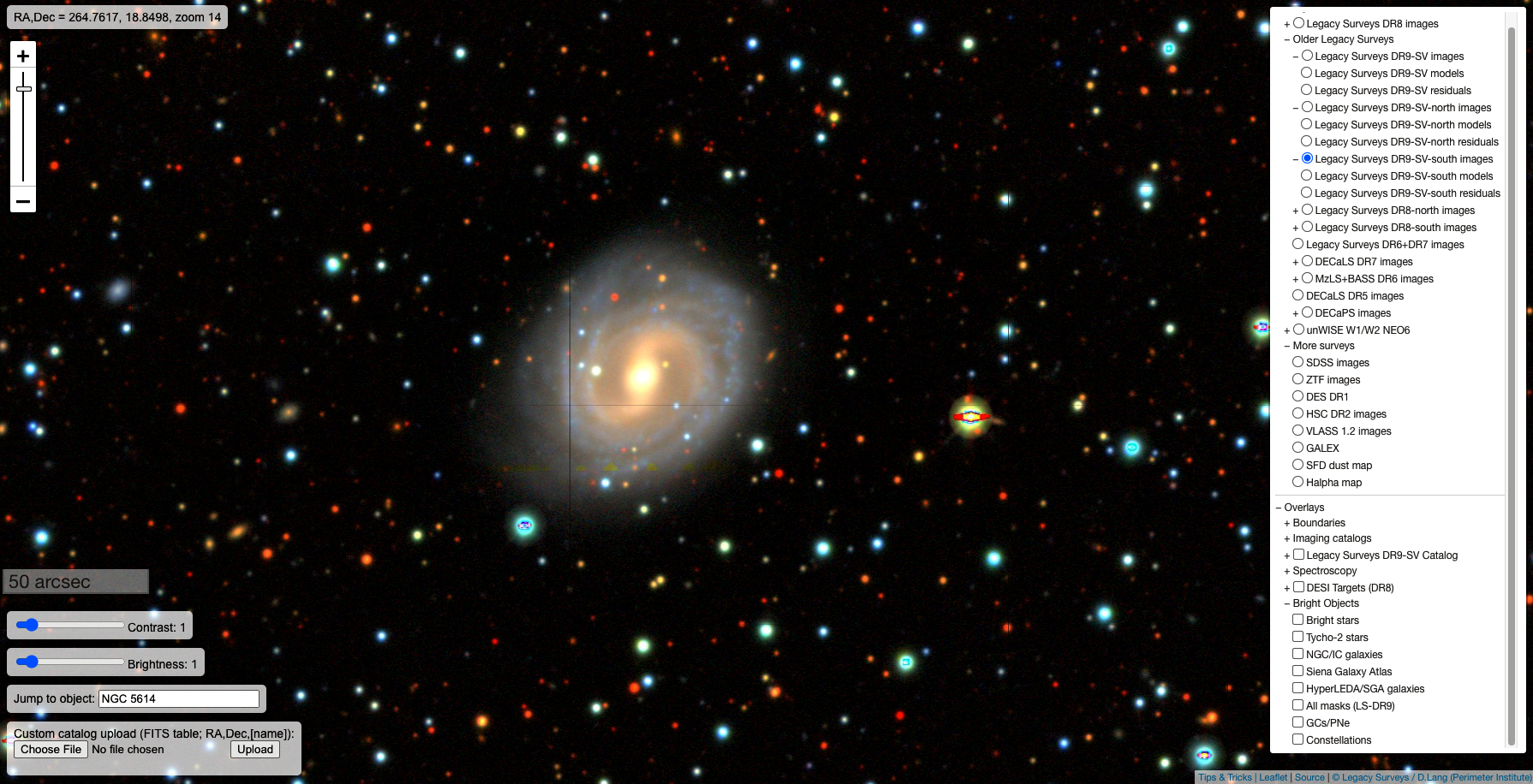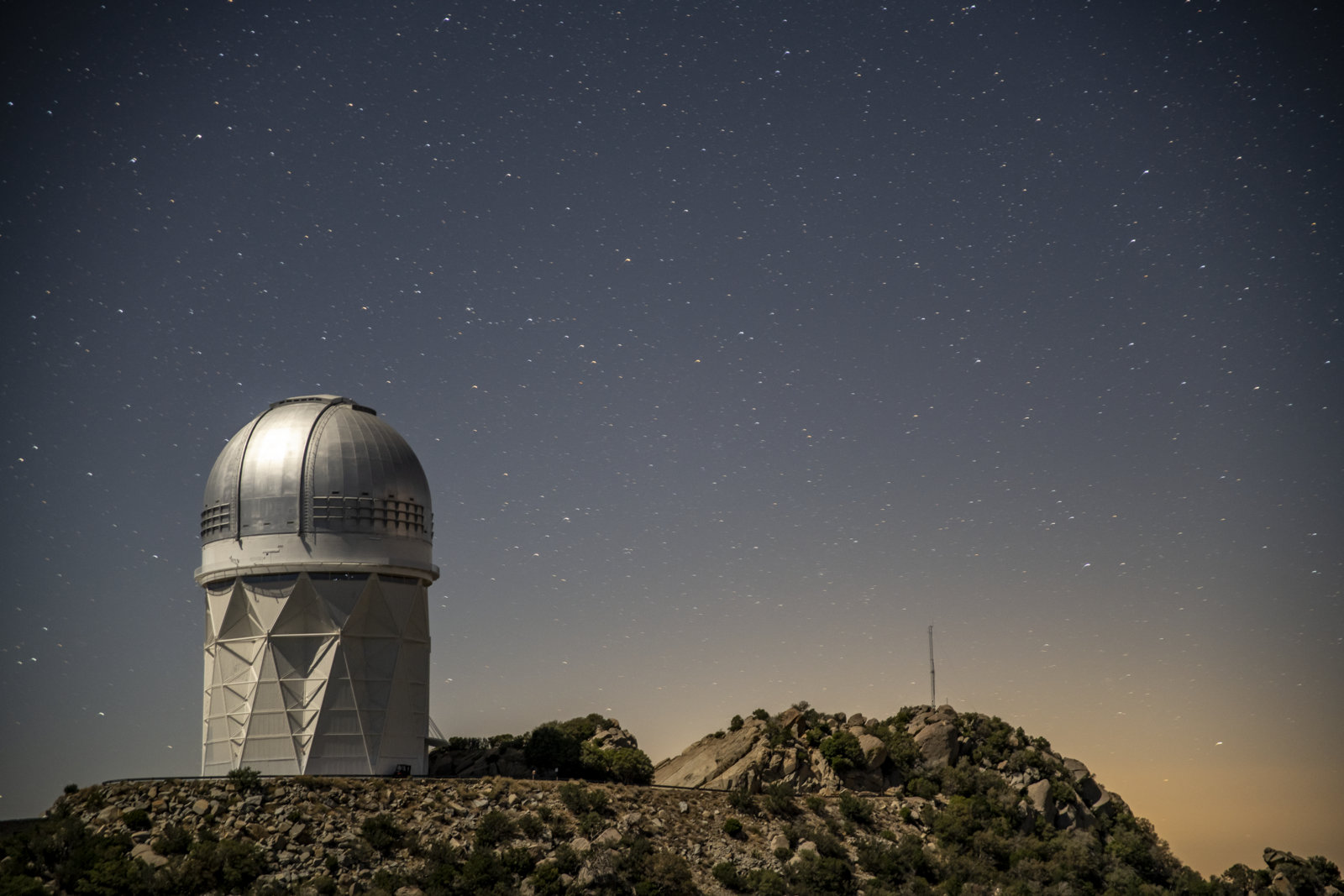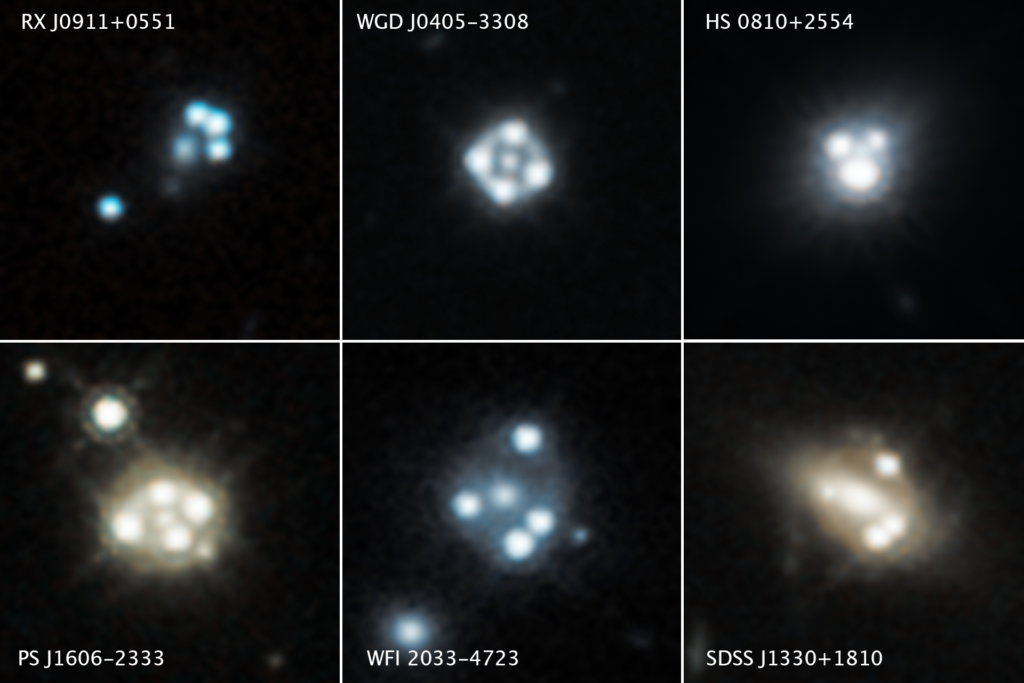With the help of the powerful GNIRS instrument on the Gemini North telescope, one half of the International Gemini Observatory, supported in part by the U.S. National Science Foundation and operated by NSF NOIRLab, a team of astronomers have discovered a double-record-breaking pair of quasars.
Tag: Quasars
New research shows quasars can be buried in their host galaxies
Quasars can be obscured by dense clouds of gas and dust in their host galaxies, not just by donut-shaped rings of dust in the close vicinity of the black hole.
Detectan cuásares duales brillando en el centro de galaxias en fusión
Utilizando una serie de telescopios en tierra y el espacio, que incluía a Gemini Norte en Hawai‘i, los astrónomos descubrieron un par de cuásares sumamente energéticos que se encuentran muy unidos, un signo distintivo de un par de galaxias fusionadas. El evento ocurrió cuando el Universo tenía sólo tres mil millones de años, lo que da cuenta de la evolución de las galaxias en el “mediodía cósmico”, un período en la historia del universo en el que las galaxias experimentaron violentas explosiones de formación estelar. Esta fusión representa un sistema a punto de convertirse en una galaxia elíptica gigante.
Dual Quasars Blaze Bright at the Center of Merging Galaxies
Astronomers using an array of ground- and space-based telescopes, including Gemini North on Hawai‘i, have uncovered a closely bound duo of energetic quasars — the hallmark of a pair of merging galaxies — seen when the Universe was only three billion years old. This discovery sheds light on the evolution of galaxies at “cosmic noon,” a period in the history of the Universe when galaxies underwent bursts of furious star formation. This merger also represents a system on the verge of becoming a giant elliptical galaxy.
Anže Slosar: Then and Now / 2011 Early Career Award Winner
To map the structures in the universe, Anže Slosar scaled up Baryon Oscillation Spectroscopic Survey data. He uses light from very distant cosmic objects called quasars as a backlight to illuminate the structure in the universe in front of them.
Successful Start of Dark Energy Spectroscopic Instrument (DESI) Follows Record-Setting Trial Run
A five-year quest to map the universe and unravel the mysteries of “dark energy” is beginning officially today, May 17, at Kitt Peak National Observatory near Tucson, Arizona. To complete its quest, the Dark Energy Spectroscopic Instrument (DESI) will capture and study the light from tens of millions of galaxies and other distant objects in the universe.

Building a Giant 2D Map of the Universe to Prepare for the Largest 3D Map
Before DESI, the Dark Energy Spectroscopic Instrument, can begin its 5-year mission from an Arizona mountaintop to produce the largest 3D sky map yet, researchers first needed an even bigger 2D map of the universe.

DESI Team Prepares for Telescope Instrument’s Restart after Unexpected Shutdown
Despite a temporary shutdown of the Dark Energy Spectroscopic Instrument in Arizona – which was in its final stages of testing in preparation to begin mapping millions of galaxies in 3D when the pandemic struck – a variety of project tasks are still moving forward.

Hubble Detects Smallest Known Dark Matter Clumps
Using Hubble and a new observing technique, astronomers have uncovered the smallest clumps of dark matter ever detected. Dark matter is an invisible
substance that makes up most of the universe’s mass and forms the scaffolding upon which galaxies are built.